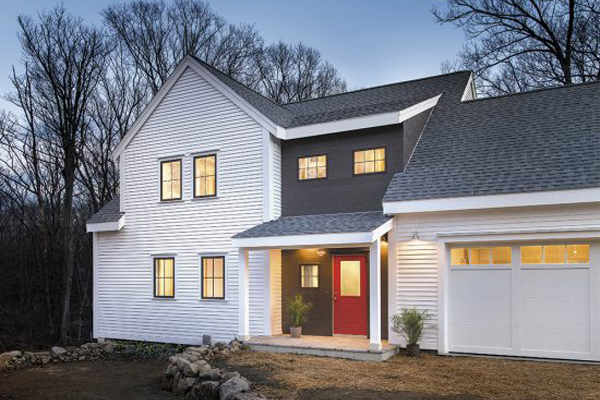It takes less than 10 seconds for someone to form an impression about a house. Surprisingly, one of the most important factors in that impression is color.
“When selecting colors, follow the 60-30-10 rule of decorating,” advises color expert Trisha Wagner, senior product manager for Boral Building Products. “Sixty percent of your color will be siding; then your accent, which may be the trim, will be near 30%; and, finally, 10% will go into shutters or another element such as stone.”
Here are a few guidelines to consider when selecting exterior color combinations:
Work With the Home Style and PeriodTo achieve the right look and feel, understand the limitations of a home’s style and choose colors that align with the architecture and time period.
For a home with natural-finish cedar siding, for example, a more neutral trim and shutters will help maintain a traditional Colonial style, while bolder accent colors such as green or brown will give it a Craftsman-like look.
Take Cues From Existing Design ElementsFor homes with stone or brick, Wagner offers this advice: To highlight or make the stone stand out, pair with a paint color that incorporates minor undertones from the stone. Conversely, to make the stone or brick blend in, find a siding color that is more similar in tone.
Further tie these elements into a home’s look by matching the trim to the stone’s or brick’s grout color.
Pay Attention to LandscapingConsider how landscaping will contrast and complement the home’s look. Houses with mature landscapes and shrubs with vibrant greens and other colors will draw the eye down. Be aware of what colors you or the homeowner will plant and how that will relate to the façade colors.
For homes without much landscaping, consider brighter siding. For those with a denser landscape, consider darker colors for more contrast.
Consider Current TrendsFor the last few years, shades of gray have been popular for home exteriors. Homeowners inspired by the versatile neutral are frequently selecting varieties and combinations like green-gray, greige, and blue-gray.
Dark, rich jewel tones, such as sapphire blue, are another common selection for exteriors. Colors in this family are typically paired with white trim, particularly on the ever-popular Craftsman-style homes.
For the indecisive customer, Wagner says neutral bases and black and white accents are a safe option that will stand the test of time.
Go Back to Basics
The easiest way to avoid color mistakes is to consult the color wheel,
But you have a lot of flexibility, she adds, with the variety of tones available.
Before committing, get samples of the siding colors being considered; have your buyers put them up to see how they look at different times of day.
In the end, “personal preference is the ultimate guide,” Wagner says. “A home’s color is highly personable and a definition of the homeowner’s style, so give it the time and attention it needs.”
No matter your design direction, TruExterior Siding & Trim can be painted any color. Request a sample to try it for yourself.
